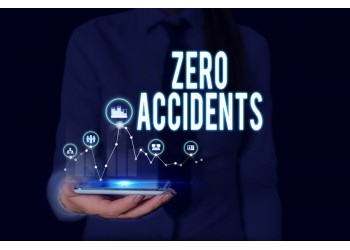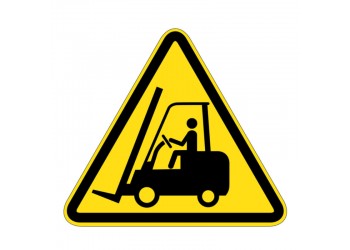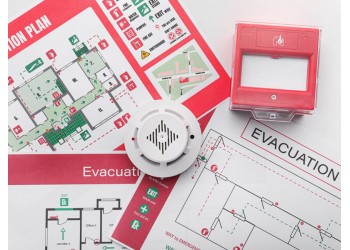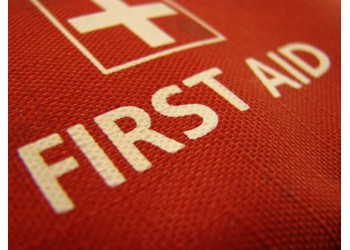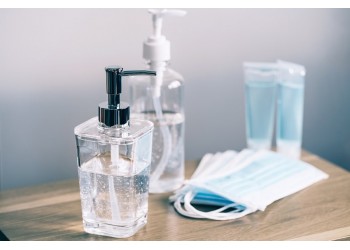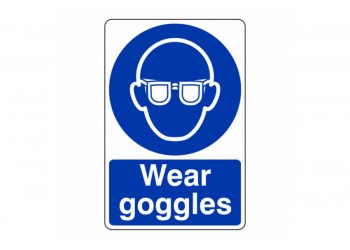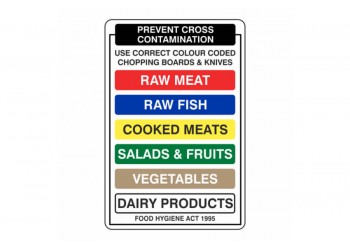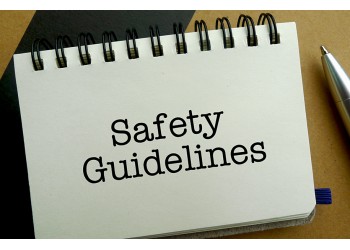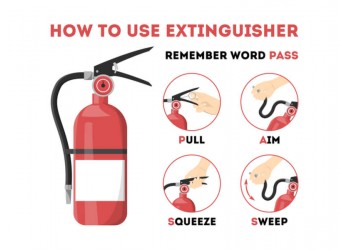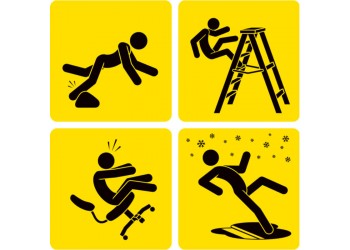Here in the UK, ‘The Regulatory Reform (Fire Safety) Order 2005 governs the legal requirements for fire extinguishers in the workplace. Forming a vital role in fire safety for employees, visitors and guests, it is vital that you understand the regulations and how they impact your business. In doing so, you’ll avoid costly fines and protect the livelihood of everyone that comes into your premises.
Legal requirements for fire extinguishers in the UK
These regulations state that you are required to have a minimum of 2 x Class A fire extinguishers on every storey of a building. The only exception to this rule is where smaller premises are involved. In this instance, you may only need 1.
A Class A fire extinguisher is used to put out carbonaceous fires – ones involving wood or paper. There are 3 different types which meet the regulation – 3-litre foam, 6-litres foam and 9-litre water. These are required in all businesses, no matter the type. However, there are some environments where other types, such as CO2 extinguishers, may be required to fight electrical fires.
Fire extinguishers should be positioned next to exits and fire alarm call-points. According to the BS5306 British Standard, you should never be more than 30 meters away from an appropriate extinguisher on any given level of the building. Each extinguisher needs to be fixed to the wall or attached to an appropriate stand which discourages them from being moved around.
And, all extinguishers should be clearly signposted with appropriate ID signs to establish their type along with how and when to use them.
Different types of fire extinguisher
As we mentioned briefly above, there are a number of different types of fire extinguisher. And, the one most relevant to your business premises depends on the activity and hazards presented there. Let’s take a look at the different fire extinguishers and the appropriate ID signs for each one.
Water fire extinguisher
Designed for use with solid combustible fires (Class A), water extinguishers can be used to put out flames accelerated by wood, paper, fabrics and coal. They create a cooling effect which penetrates the burning material and prevents it from relighting. These extinguishers should NOT be used on electrical fires, with flammable liquids or on flammable metal fires.
Each water fire extinguisher should be accompanied by this ID sign.
Carbon Dioxide fire extinguisher
Also known as a CO2 fire extinguisher, these are filled with pure carbon dioxide. This is a completely clean extinguishant which leaves behind no residue. It is recommended for use on electrical fires alongside other flammable accelerants, including petrol, oil and solvents. CO2 extinguishers fall into Class B.
Each carbon dioxide fire extinguisher should be accompanied by this ID sign.
AFF Foam fire extinguisher
Aqueous Film Forming Foam fire extinguishers are designed to offer a very fast way of diminishing flammable liquid fires. The foam itself reduces the risk of re-ignition and makes it an ideal choice for fires involving organic material. This includes cardboard, paper, wood and coal.
Each AFF Foam fire extinguisher should be accompanied by this ID sign.
Powder fire extinguisher
Marked by their blue label, powder fire extinguishers are designed to combat a range of different fires. The chemicals found within the dry powder are designed to inhibit combustion and release oxygen which diminishes the flames. As a multi-purpose fire extinguisher, they can be used on Class A, B and C fires as well as those involving electrical equipment. The powder released can affect visibility and can be hazardous to those with breathing issues. For these reasons, they are generally not recommended for indoor use unless there is no alternative.
Each Powder fire extinguisher should be accompanied by this ID sign.
Wet Chemical fire extinguisher
Specifically designed for use on Class F fires, wet chemical fire extinguishers are suitable for use in and around kitchens. They can be used on cooking oils and fats. The wet chemical is designed to cool down burning oil, reduce flames and chemically react to create a soap-like solution. This prevents re-ignition. These extinguishers are marked by a yellow label and can also be used on Class A and Class B fires.
Each Wet Chemical fire extinguisher should be accompanied by this ID sign.
L2 Powder fire extinguisher
These graphite powder extinguishers are recommended for use against lithium metal fires. The powder is designed to smother the fire through the use of magnesium. This works in a similar way to sand – it removes the heat while actively reducing the amount of oxygen available. They need to be used on flat surfaces and the user must be standing relatively close to the fire in order to administer the powder. They are suitable for Class D fires.
Each L2 Powder fire extinguisher should be accompanied by this ID sign.
Water + Additive fire extinguisher
In some fire extinguishers, chemical additives are used to increase the effectiveness. They are sometimes known as Hydrospray extinguishers and are generally smaller than standard offerings. These additives remove the water’s natural surface tension, making it wetter. This means it sticks to and soaks into the accelerant more than normal water.
Each Water + Additive fire extinguisher should be accompanied by this ID sign.
Finding the right fire extinguisher for your business
The best way to establish the risk of a fire is to do a risk assessment. Here, you’ll be able to identify hazards and notice where there is a possibility for a fire to occur. At Lasting Impressions, we have been working with businesses of all different shapes and sizes to establish their safety needs. In many cases, this means noticing where there is a risk of fire and advising on the best safety tools and signage to combat this.
If you have any questions about the right fire extinguisher, are looking to improve signage in the workplace or would like to discuss an individual project, get in contact with our team here today. We’re on hand to ensure your business premises are as safe as it can possibly be.
